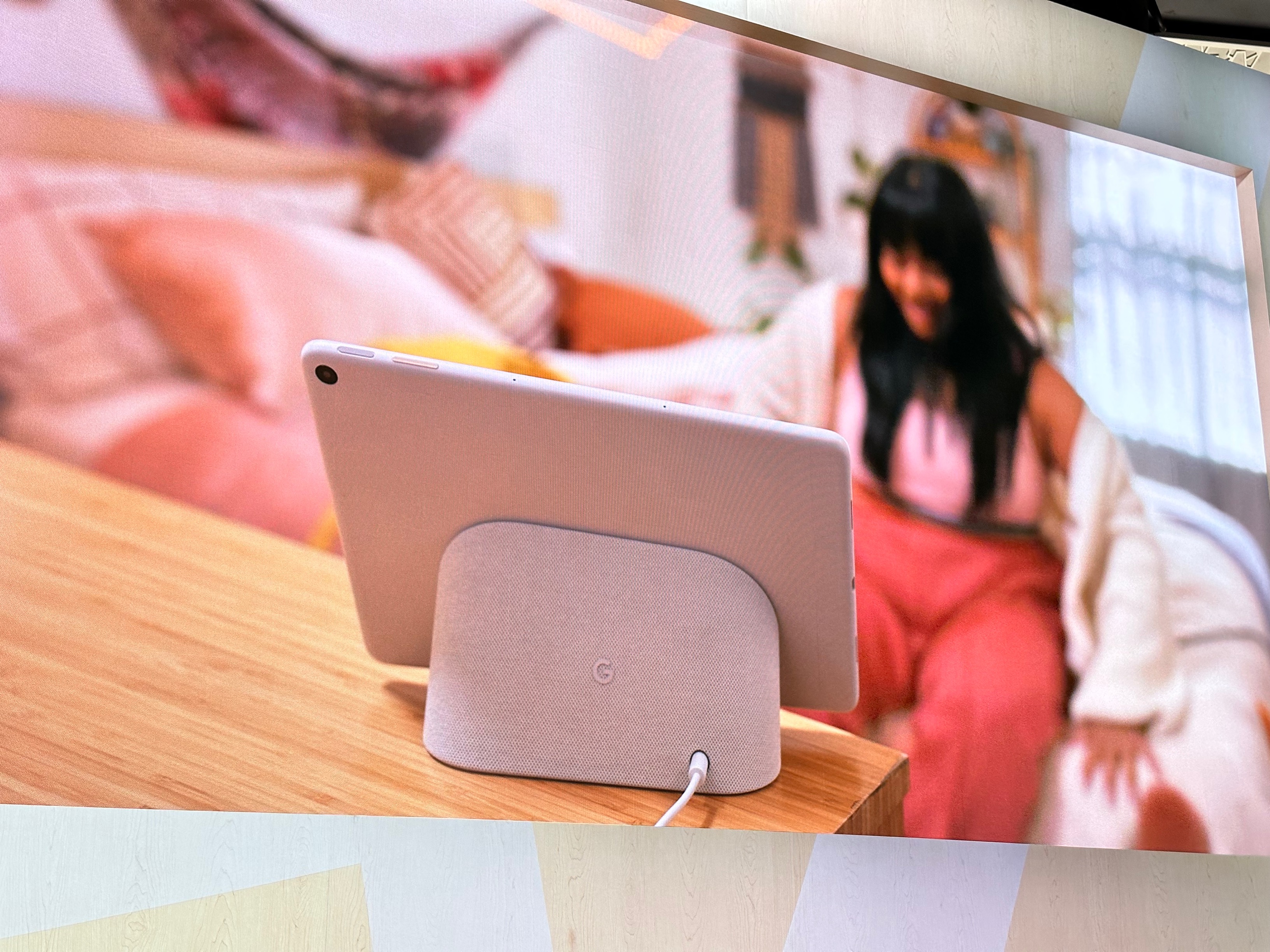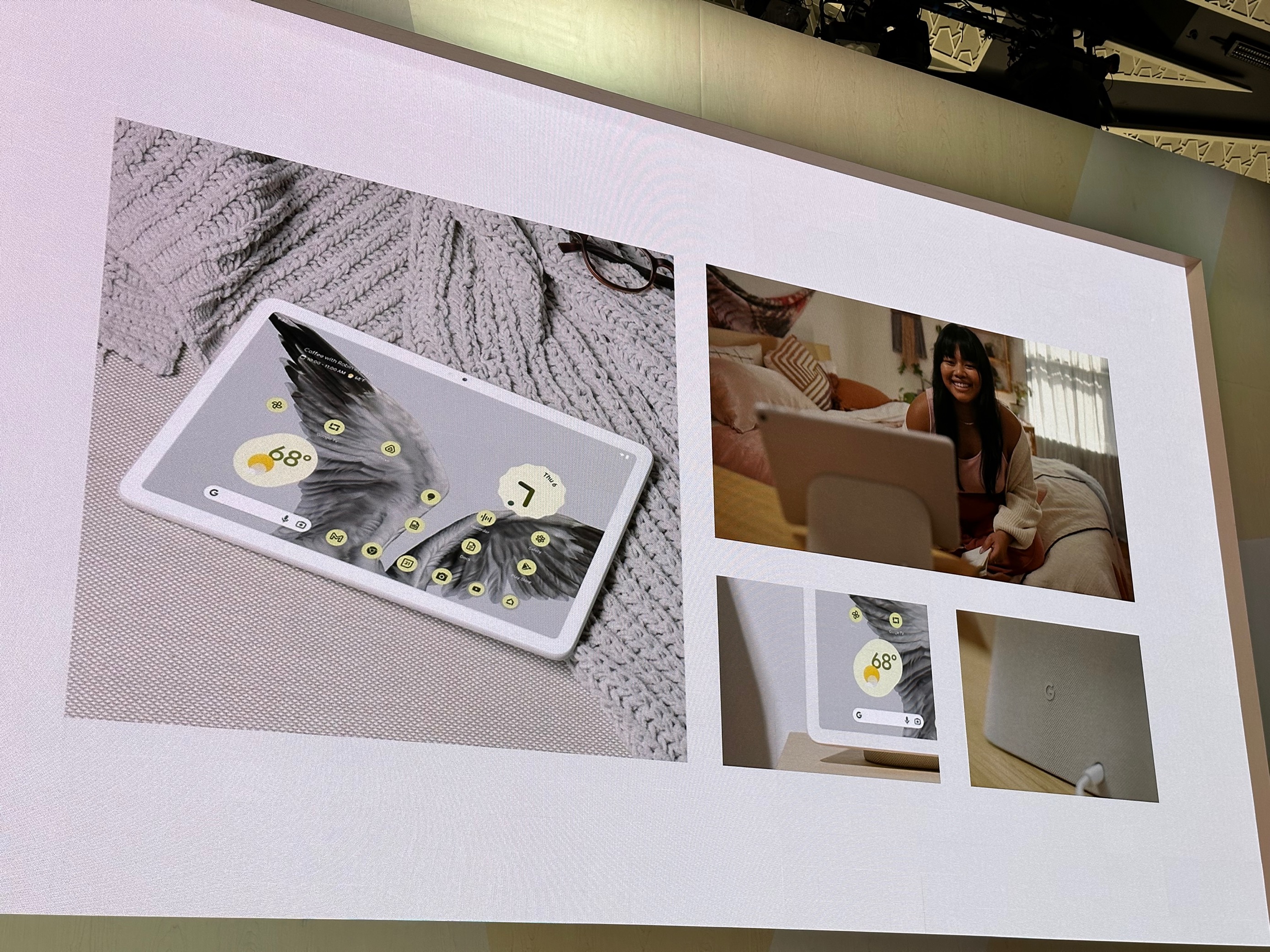Google has turned the page on a new chapter in its Pixel hardware ecosystem, with this fall’s “Made by Google” event revealing the company’s first smartwatch alongside the next-generation Pixel 7 and Pixel 7 Pro flagship smartphones.
The new product announcements didn’t come as much of a surprise since Google has been offering up sneak peeks since it first teased the new Pixel device lineup at Google I/O in May. However, this week’s event answers the last remaining questions, including full specifications, pricing, and — of course — the actual release date.
Google Pixel 7 and Pixel 7 Pro
Over the past few weeks, Google has been offering up images and even design videos for the new Pixel 7 and Pixel 7 Pro, showcasing the familiar design in a classier recycled aluminum finish. The company had also previously confirmed that both would run Android 13 and be powered by the next generation of Google’s Tensor chip.
During today’s event, company executives filled in the rest of the blanks, revealing a pair of flagship smartphones focused primarily on iterative improvements that show the lineup has reached a certain level of maturity.
The Pixel 7 and Pixel 7 Pro have shrunk slightly from their predecessors. The Pixel 7 gets a 6.3-inch screen, dropping the new handset by 0.1 inches in screen size and physical height compared to the Pixel 6. However, at 0.3 inches deep and 6.9 ounces, it’s also shed some of its bulk
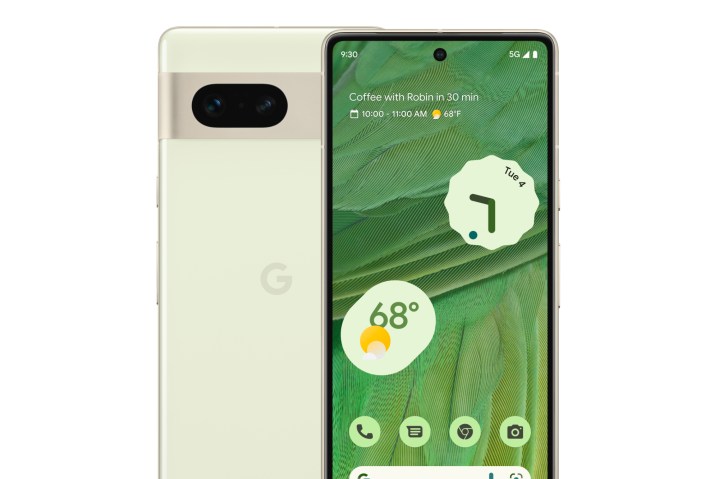
Meanwhile, the Pixel 7 Pro features the same 6.7-inch display as the Pixel 6 Pro while getting a height and depth reduction, although, at 7.5 ounces, it weighs in about the same. Some reports had suggested that Google was planning to shrink the bezels to offer a larger screen on the Pixel 7 Pro in the same size as last year’s model, but instead it looks like Google chose to reduce the size without sacrificing screen real estate.

The Pixel 7 and Pixel 7 Pro offer significantly brighter screens this year, with 1,400 nits of peak brightness on the Pixel 7 and 1,500 nits on the Pixel 7 Pro. Both offer 1,000 nits of HDR brightness. Those are some healthy increases over the screens on last year’s Pixel 6 lineup, which peaked at around 800 nits, but the screen technology appears unchanged. The Pixel 7 features the same 1,080 by 2,400 FHD+ 90Hz OLED display specs as the Pixel 6, while the Pixel 7 Pro gets the 1,440 by 3,120 QHD+ 120Hz display from the Pixel 6 Pro.
While we weren’t expecting any major camera improvements to the Pixel 7 lineup, Google has increased the optical zoom on the Pixel 7 Pro’s 48-megapixel (MP) telephoto lens from 4x to 5x, which in turn means the digital zoom can now reach 30x magnification. The 12MP ultrawide camera gains autofocus and gets a slightly wider 125.8-degree field of view, but otherwise retains the same specs as the Pixel 6 Pro, as does the 50MP main camera.
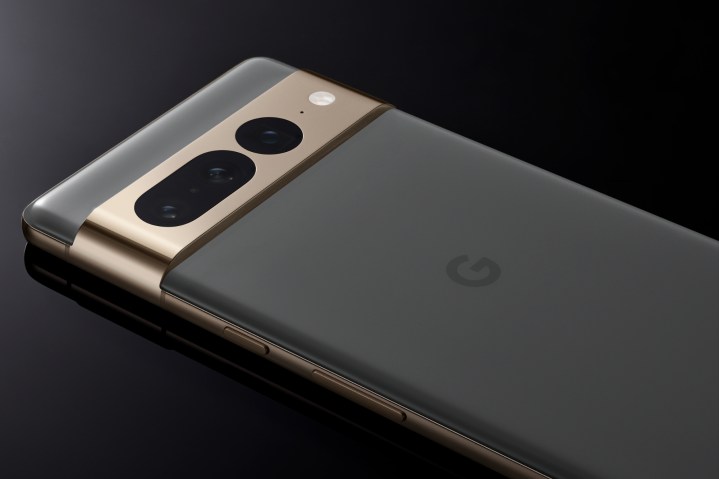
On the other hand, the Pixel 7 appears to have all the same camera specs as the Pixel 6, although it’s certainly no slouch. The 50MP main camera remains identical to the one found on its larger sibling, but the 12MP ultrawide camera doesn’t gain the same autofocus or wider field of view improvements as the 7 Pro. The Pixel 7 does get a boost to a 10.8MP selfie camera with a wider field of view for group selfies, putting it on par with the Pixel 7 Pro.
However, most of the actual improvements in modern smartphone cameras come from software more than from megapixels and sensor sizes, and this is where Google’s new Tensor G2 chip comes in. On top of the solid computational features already available with the Pixel 6 lineup, Google has added cinematic blur for videos, photo unblur, improved Real Tone color mapping, and faster Night Sight processing. The Pixel 7 Pro also gains a macro mode thanks to the autofocus on the new ultrawide lens, while the Pixel 7 pushes the Super Res Zoom up to 8x.
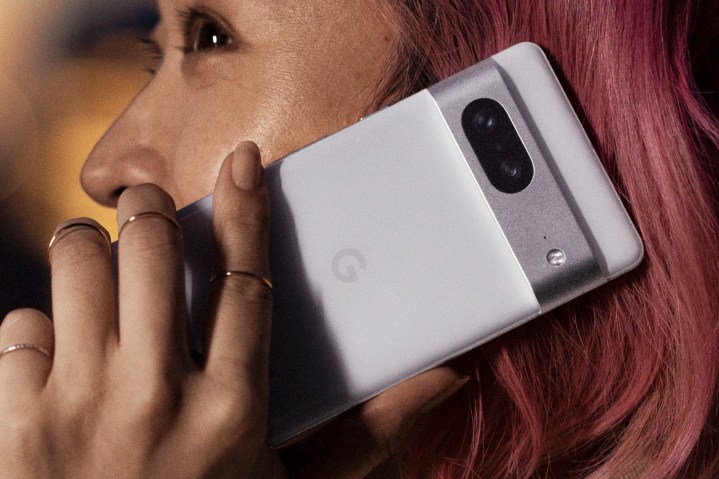
The Pixel 7 and Pixel 7 Pro also promise the same 24-hour battery life, which can now reach up to 72 hours with Extreme Battery Saver mode. Our testing showed Google’s numbers to be pretty accurate on the Pixel 6 lineup, so there’s no reason to believe the Pixel 7 models won’t deliver on that promise. Fast charging also lets you juice up to a 50 percent charge in 30 minutes by using a compatible 30-watt USB-C charger.
Naturally, Google is changing up the array of colors for this year’s lineup. The Pixel 7 will come in Snow, Obsidian, and Lemongrass and features a matte aluminum finish, while the Pixel 7 Pro comes in Snow, Obsidian, and Hazel in polished aluminum. And you can get a better look at those colors in our Pixel 7 hands-on.
Google Pixel Watch
While the Pixel 7 and Pixel 7 Pro will undoubtedly continue to be the flagship products in Google’s hardware lineup, the company has been hard at work building an entire ecosystem around its Pixel smartphones. That began in 2017 with the first Pixel Buds, and now Google has added its first smartwatch to the mix, which the company is calling its “Pixel Collection.”
The Pixel Watch is another product that’s been teased by the company for long enough that there were few surprises at this week’s event. The wearable’s design features a circular domed look that’s both minimalist and sleek. It stays consistent with the styling of other Wear OS smartwatches, yet it’s also unmistakably unique.
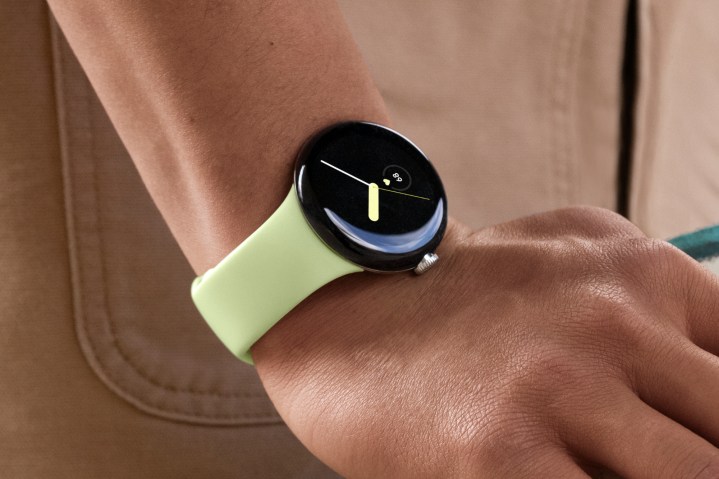
The Pixel Watch is available in only a single size and finish. It’s made from 80% recycled stainless steel and Corning Gorilla Glass in three color options designed to complement the Pixel 7: matte black, polished silver, and champagne gold. It also has an interchangeable band system. A fluoroelastomer active band is included in a choice of four colors, while woven, stretch, two-tone leather, and crafted leather bands will be available for purchase separately. Google notes that metal mesh and metal links bands will be coming next spring, and we’re sure that third-party accessory makers will quickly jump on board to offer their own options.
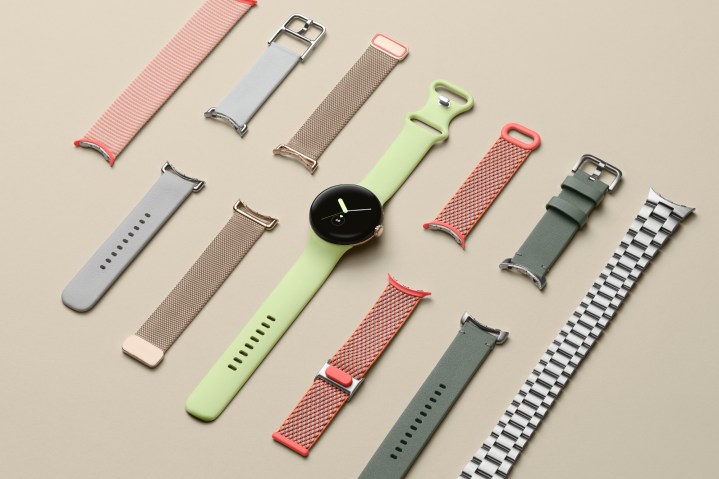
The Pixel Watch also features an always-on display, so you’ll be able to see the time and other relevant information at a glance, plus 4G/LTE cellular, Wi-Fi connectivity, NFC, and Bluetooth support. Internal sensors include a compass and altimeter, blood oxygen sensor, optical heart rate sensor, and what Google calls a “multipurpose electrical sensor.” At launch, however, you won’t actually be able to do anything with the blood oxygen sensor.
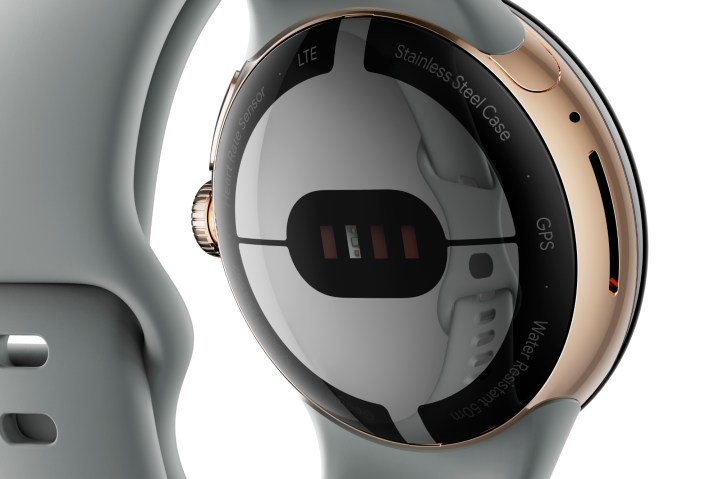
Under the hood, Google is leveraging the expertise that it obtained from its 2019 acquisition of Fitbit to power a whole suite of health and fitness features. This includes continuous heart rate tracking, sleep tracking, 40 different workout modes, and an ECG app.
Thanks to Google’s advanced machine learning algorithms, the Pixel Watch also promises a Daily Readiness score that will help direct you to the best workouts each day, plus Active Zone Minutes to let you know when you should push yourself harder during a workout. Naturally, the Pixel Watch can also be used with a Fitbit Premium subscription, and it includes a six-month subscription for new users.

With WearOS 3.5, the Pixel Watch includes wearable versions of Google Maps, Google Wallet, Google Assistant, YouTube Music, and Messages. Emergency SOS lets you quickly call 911 or other international emergency services when you’re in a bind. Google has announced plans to bring fall detection to the Pixel Watch in a winter Wear OS update.
The Google Pixel Watch promises up to 24 hours of battery life on a single charge, with a USB-C magnetic charging cable powering the wearable to 50% in 30 minutes or a full charge in about 80 minutes. It’s also rated for 5 atmospheres (5 ATM) of water resistance under ISO standard 22810:2010 and features durable and scratch-resistant 3D Gorilla Glass for protection from everyday bumps and scrapes.
Google Pixel Tablet

During the event, Google also gave us another look at its upcoming Pixel Tablet. It’s not launching today, but we do have a better idea of what’s coming from the tablet when it launches in 2023.
The tablet’s name is officially “Google Pixel Tablet.” Google says the tablet is designed with premium materials and that it has an immersive display. The Google Pixel Tablet runs Android with all of the Material You theme goodness you get on a Pixel smartphone. Google also touts that the Pixel Tablet is “the best way to experience Android on a tablet.”
The same Tensor G2 chip inside the Pixel 7/7 Pro is what powers the Pixel Tablet. All of the same phone calling and photo editing features from the Pixel 7 series are also available on the Pixel Tablet, meaning you get all of Google’s excellent software smarts — just on a larger screen than before.
Another unique aspect of the Google Pixel Tablet is that it can be paired with a charging/speaker dock. The Pixel Tablet looks just like a Nest Hub Max when placed on the dock, turning it into a perfect smart home companion. While on the dock, the Pixel Tablet gives you easy access to smart home controls and hands-free Google Assistant voice commands. Furthermore, it can function as a digital picture frame for Google Photos.
The Google Pixel Tablet is launching in 2023, and as it stands, we still have no word on final pricing.
Pricing and availability
As predicted, Google is continuing to aggressively price its Pixel lineup on par with prior models. The Pixel 7 is available in 128GB and 256GB capacities, starting at $599, while the Pixel 7 Pro starts at $899 for a 128GB model, with 256GB and 512GB versions available.
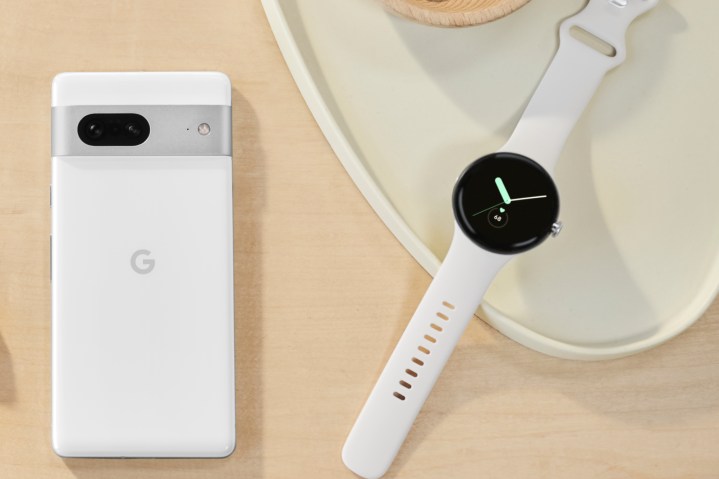
The Pixel Watch comes in four color and band combinations, with the Bluetooth and Wi-Fi version starting at $350 and the cellular-equipped model starting at $400. While the Pixel Watch is obviously an ideal companion to the Pixel 7, it can be used with any smartphone running Android 8.0 or later.
Pre-orders for the Pixel 7/7 Pro and Pixel Watch are open now, with regular sales beginning October 13.
